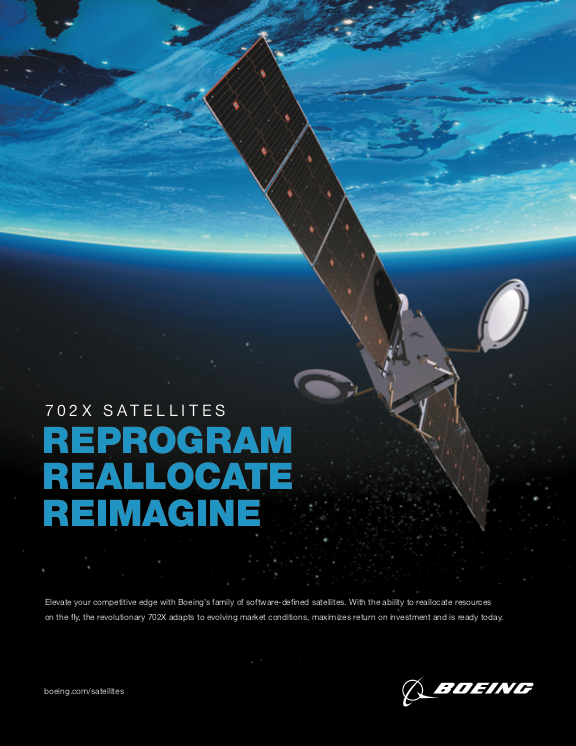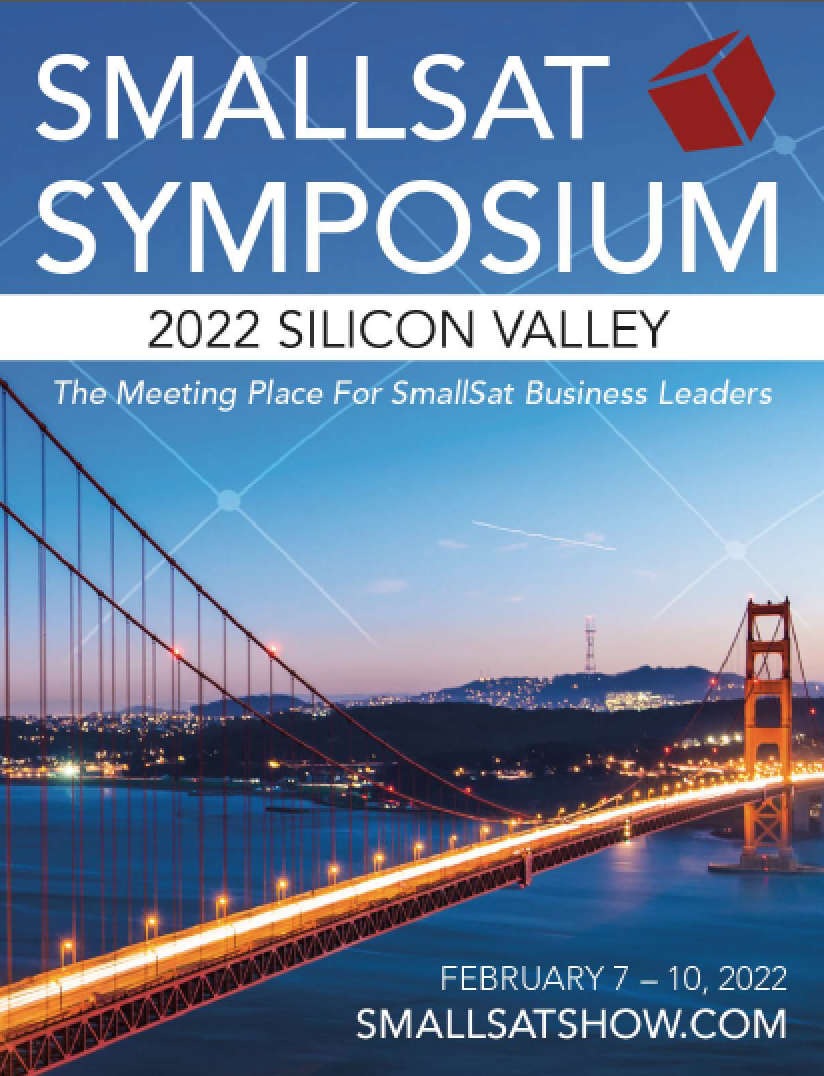The Authoritative Guide to Global Space Activity — Executive Summary
The idea of “Space for all” was further validated with the flights of Space X Inspiration4 in September and Blue Origin’s second mission in October. Eight civilians, ranging in age from 29 to 90-year-old “Star Trek” actor William Shatner, climbed into capsules, departed Earth, and for at least a few minutes, experienced weightlessness and the off- world perspective of seeing Earth from space.
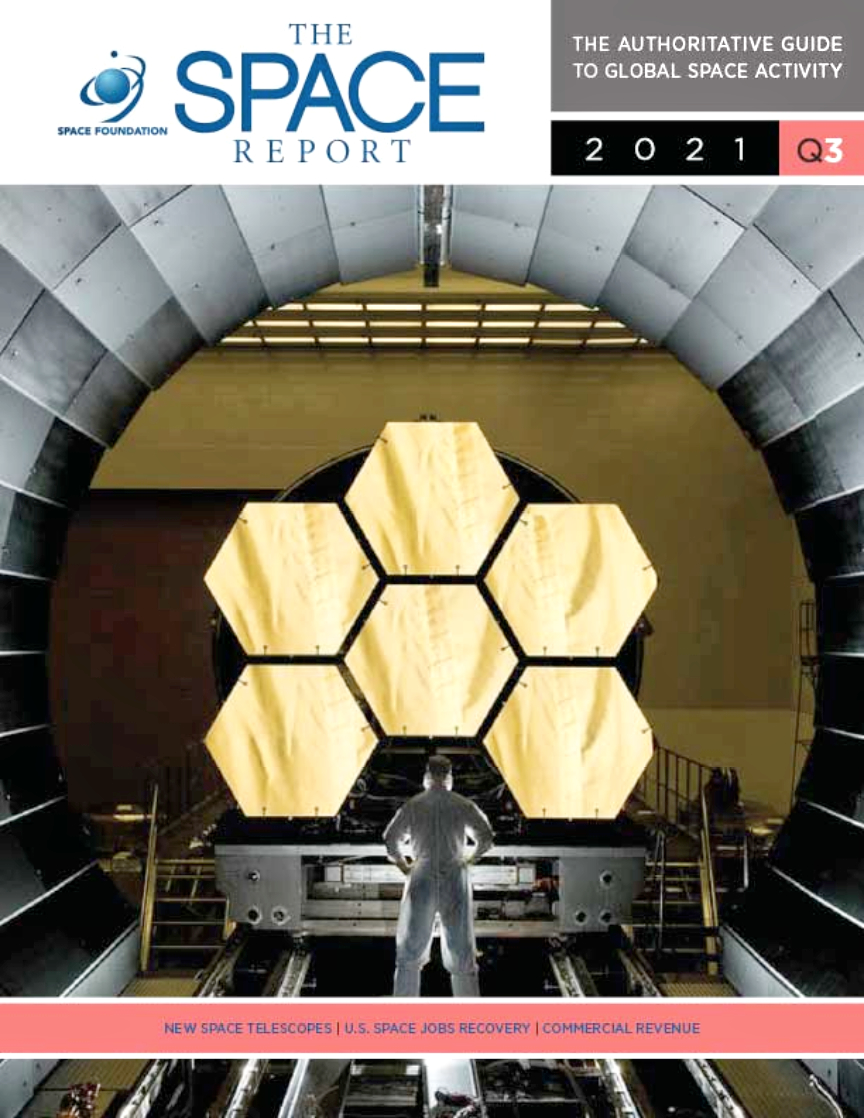
Space tourism will not be the final frontier, as NASA reminded all on October 21 in announcing that the unpiloted Artemis 1 lunar orbit mission might be a “go” as early as February, 2022.
The Space Report Q3 provides analysis of space-sector employment and job growth in key areas post- pandemic, shares quarterly investment and stock market activity, and details advancements in the space industry, including new space telescopes and robotic-assist work gloves first used by astronauts on the International Space Station.
Here are highlights from the Q3 edition:
1| Space Infrastructure
The James Webb Space Telescope, set to launch in December, will be the first of a new generation of space telescopes, but it will be joined by at least five others within the decade. To obtain next-generation observations, engineers have designed a range of new technologies, including novel cooling systems, foldable mirrors, and high-tech pointing gear. Future telescopes also have greater onboard storage and downlink capabilities, increasing the amount of data scientists can collect. The Q3 edition provides a detailed look at JWST and five other telescopes.
2 | The Space Economy
Equity financing activity in the space sector posted another near-record high in Q3 21 following the prior quarter’s all-time high. Third-quarter equity financings nearly doubled to 55 from 28 in the same period of last year (Q3 20), according to Quilty Analytics analysis. In dollar value of those disclosed transactions, Q3 21 recorded $9.8 billion in investment activity, up from $6.6 billion in Q3 20.
Since 2018, the higher volume has been matched by greater investment per transaction, resulting in a 200% increase in the average value of the 10 largest transactions examined in the last four years. The maximum transaction value has jumped more than 300%.
From 2017 to 2020, the latest year for which data is available, manufacturing revenue associated with commercial payloads recorded a 134% increase. Human spaceflight logged a 14% increase over the same time, and revenue for military spacecraft grew 10%. Those revenue gains, however, were not spread equally across the top countries in space.
Europe and Japan saw manufacturing value fall since 2018, while Russia and India saw declines of more than 50% from 2019. China’s spacecraft value rose 88%, followed by the United States with 48% growth.
3| Space Workforce
Space employment in the United States has continued to be resilient to the global pandemic. The initial drop in the workforce due to COVID-19 in April 2020 was only 2.9% compared to the total U.S. private sector drop of 15.4%. The industry had a slow initial recovery but has been maintaining growth at a near constant rate since July 2020. By late 2020, the space industry workforce had surpassed pre-pandemic levels while the U.S. private sector was still 3.5% below pre- pandemic employment.
One sector in the U.S. space industry — Guided missiles, space vehicles, and parts — saw almost no initial employment drop due to the pandemic in April 2020 and continued to steadily grow over the past year. Compared to U.S. total private employment, which has only increased 4.1% from July 2015 to July 2021, this sector has grown by 33.3% over the same period, according to monthly statistics from the U.S. Bureau of Labor Statistics. (Please see the chart at the top.)
Purchasing Options
The Space Report is widely recognized as the definitive body of information about the global space industry. This report contains worldwide space facts and figures and is illustrated with photographs, charts, and graphs detailing the benefits of space exploration and utilization, the challenges facing the space sector, opportunities for future growth, and the major factors shaping the industry.
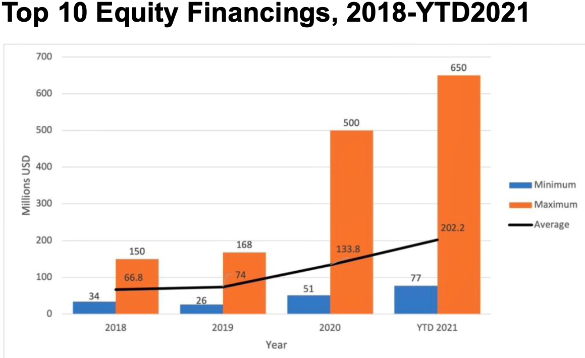
Note: Table includes only satellite and space companies that announced venture-like financings. Source: Quilty Analytics.
The Space Report serves as a resource for government and business leaders, educators, financial analysts, students, and space-related businesses. For more than a decade, The Space Report has chronicled the growth of the space community from around the world.
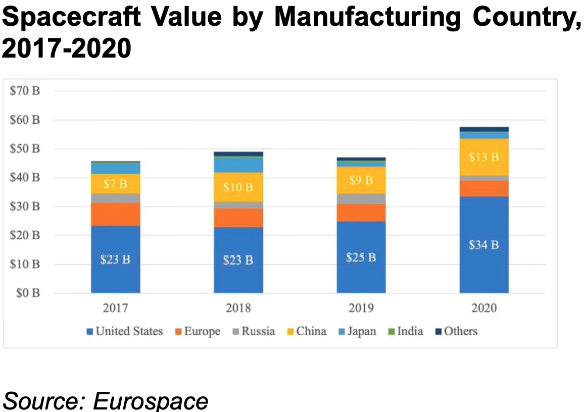
Subscribe to The Space Report Online. This service provides subscribers with searchable access to all the research conducted for The Space Report dating back to 2005. The full PDF is available at no charge to subscribers of The Space Report Online.
Space Foundation’s Research & Analysis team produces The Space Report.
To purchase The Space Report, or to subscribe to The Space Report Online, please access thespacereport.org/subscriptions. For more information about the availability, pricing, and delivery of The Space Report, please contact TheSpaceReport@SpaceFoundation.org.
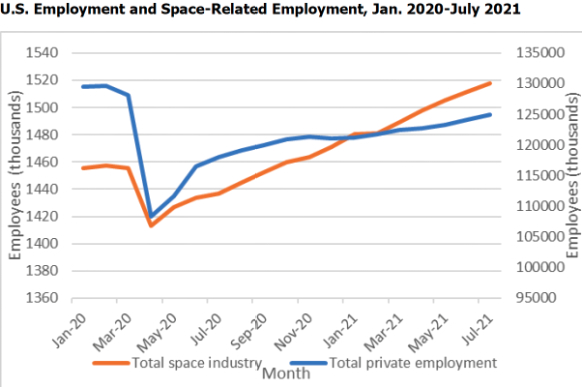 Note: Both functions are graphing total employment in thousands for their respective industries; however, they are graphed on separate scales to illustrate the similar trends. Total space industry employment is scaled on the left while total private employment is scaled on the right.
Note: Both functions are graphing total employment in thousands for their respective industries; however, they are graphed on separate scales to illustrate the similar trends. Total space industry employment is scaled on the left while total private employment is scaled on the right.
Source: Space Foundation, U.S. Bureau of Labor Statistics
For questions related to The Space Report content or the space industry in general, or to request customized research by our Research & Analysis team, please contact Research@SpaceFoundation.org.

Author Lesley Conn is the managing editor of The Space Report and the senior manager of Research & Analysis at Space Foundation in Colorado Springs, Colorado. Previously, she was a writer and editor at Gulfstream Aerospace and an award-winning investigative journalist. For additional information, please visit www.spacefoundation.org.


